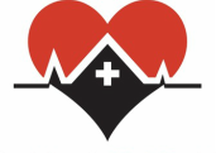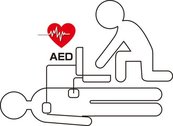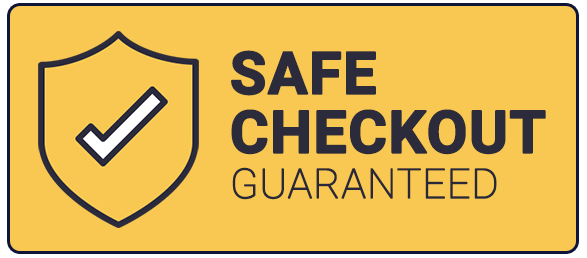|
We all know that technology is amazing. Many of us would be lost without our portable electronic devices. Now we can even use such things as "Alexa", the voice activated Amazon device, to help us with CPR and First Aid prompts. The American Heart Association now says that "Alexa" will give instructions for CPR. heart attack, and even what to do when someone may be having a stroke.
According to the American Heart Association, "Alexa" will offer instructional steps for an adult or adolescent who suddenly collapses. However, due to unforeseen circumstances, just like in the classes I teach, the first thing that Alexa will say is to "call 911". The person would simply say; "Alexa, How do I perform CPR?". Alexa would then offer the steps for hands-only CPR for someone who suddenly collapses. "Alexa" would go on to instruct the first responder to "push hard and fast in the middle of the chest at a rate of 100 to 120 beats per minute". It's important to remember though, that while "Alexa" can prompt the first responder on the proper steps in facilitating emergency cardiovascular care; hands-on training within an American Heart Association certification class can provide lifesaving skills that allow the first responder and/or healthcare provider to execute care in any emergency situation. http://www.foxla.com/news/local-news/237886558-story http://www.kgw.com/news/health/amazons-alexa-guides-users-through-cpr/413635518
Comments
If your not a healthcare professional and you happen to see the AED-it is typical to become nervous and not want to be the one to have to turn it on and use it. I see that in my classes everyday and its normal to feel that surge of anxiety. However, the AED is a simple device, with the proper training, just eases the role of the first responders in providing cardiovascular care. Just remember- turn the AED on and listen to the AED prompts. So you are probably asking, so if the AED is that easy to use then why is AED training required?
The American Heart Association has indicated that the AED user must know how to recognize signs of cardiac arrest and how to activate the EMS system and how to do CPR. An AED operator must know how to recognize the signs of a sudden cardiac arrest, when to activate the EMS system, and how to do CPR. Subsequently, the user must become familiar with the device in order to feel comfortable using the AED in an emergency. The Occupational Safety Health Administration (OSHA) indicated that chances of survival from sudden cardiac death decrease by 7-10 percent for each minute without immediate CPR or defibrillation. After 10 minutes, resuscitation is rarely successful. Consequently, as you can now see, the AED is a critical component of life-sustaining emergency cardiovascular resuscitation. Here at Help-A-Heart CPR, we offer extensive training on the AED in most of our healthcare and non-healthcare provider CPR/First Aid certification courses. Besides being a distributor of Zoll AED's, we also offer hand-on training at offsite locations. If you would like one of our certified and qualified instructors to come to your business or organization and conduct AED training; just email us at [email protected] or feel free to call us at 210.380.5344. http://www.heart.org/HEARTORG/General/AED-Programs-Q-A_UCM_323111_Article.jsp#.WKNu5TsrKyI https://www.osha.gov/SLTC/aed/ With our hot summers here in South Texas; knowing what to do when someone faints is critical.
Fainting usually occurs due to lack of adequate blood supply to the brain. If you ever encounter an individual who has fainted; Dr. Pradhip Shah of www.healthsite.com suggests the following: 1. Ensure the person is lying in a supine position (on back) with legs elevated as this increases the blood flow to the brain. 2. Call for assistance immediately. If the place is crowded, move the individual to a location that has increased ventilation. 3. If the person is wearing tight clothing, loosen the clothing as well as belts, scarves, and collars to increase the blood flow. 4. Try to revive the person by talking loudly to him or her and calling their name, feel the pulse, check the breathing to ensure that the person is breathing normally and not gasping for air. 5. Sometimes a person might faint from being in the sun too long, from being stressed, and/or even traveling for work and becoming dehydrated. After the person regains consciousness, give the individual a drink with electrolytes or even fruit juice or water with salt and sugar mixed in. 6. Ensure that the person rests for at least 30 minutes prior to regaining normal activity levels. In 90% of cases, the person who faints will regain consciousness within a minute or two. However, if a person fails to do so, Call 911 Immediately!! Source:http://www.thehealthsite.com/diseases-conditions/first-aid-for-fainting-what-you-should-do-when-someone-faints-b0217/ |
AuthorDr. Tracy A. Jones is the CEO of Help-A-Heart CPR, LLC and an American Heart Association, ASHI, and American Red Cross Master Program Trainer, Instructor, & AHA Faculty Member located in San Antonio, Texas. Archives
June 2024
Categories |
Help-A-Heart CPR, LLC | 1747 Citadell Plaza Suite 101 | San Antonio, Texas 78209 | (210) 380-5344 | [email protected]
Copyright © Help-A-Heart CPR, LLC 2024
100% Certification Acceptance
We promise your employer, school, or agency will accept the certification card we issue to you. If there is a question of acceptance or validity, simply send us an email at [email protected] with full details. We will reach out to the individual/entity and provide accreditation information. If still there’s a question, we will provide you with a full refund of your class fee. It’s that simple.
We promise your employer, school, or agency will accept the certification card we issue to you. If there is a question of acceptance or validity, simply send us an email at [email protected] with full details. We will reach out to the individual/entity and provide accreditation information. If still there’s a question, we will provide you with a full refund of your class fee. It’s that simple.
|
Communities Served
ALABAMA: Birmingham
ARKANSAS: Fayetteville, Hot Springs, Jonesboro, Little Rock NEW MEXICO: Albuquerque TENNESSEE: Knoxville TEXAS: Amarillo, Arlington, Austin, Bandera, Bastrop, Boerne, Brownsville, Comfort, Converse, Corpus Christi, Dallas/Ft. Worth, Del Rio, Dripping Springs, El Paso, Floresville, Fredericksburg, Georgetown, Harlingen, Houston, Junction, Katy, Kerrville, Kingsville, Kingwood, Laredo, Lubbock, Lufkin, McAllen, Midland, New Braunfels, Odessa, Pleasanton, Round Rock, San Angelo, San Marcos, Schertz, Seguin, Taylor, Temple, Texarkana, Tyler, Universal City, Victoria, Waco, The Woodlands |
Why Choose Help-A-Heart CPR?
1. Flexible Scheduling
2. On and Off Location Training Available 3. Casual, Fun Atmosphere 4. Best Price Guarantee 5. All Instructors are AHA and/or ARC certified 6. 5 Star Google Reviews 7. Blended Learning (Online & Skills Check) Available 8. Meets OSHA & College CPR Requirements 9. Get Certified Within 3-4 Hours 10.Certification Is Good For Two Years 11. Official AHA/ARC/ASHI Training Site 12. High Quality Safety Training! |










